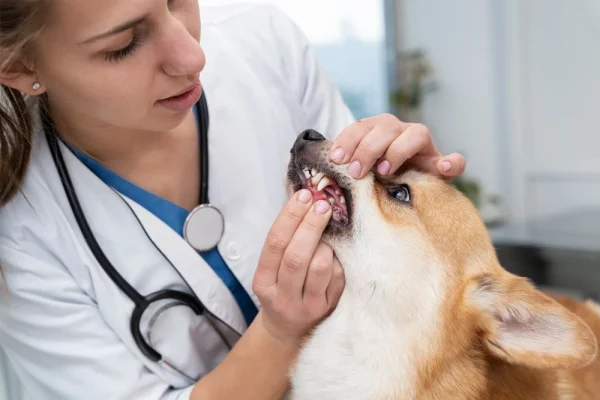Rabies Education and its Prevention

Definition
Rabies is a viral disease that affects the central nervous system of mammals, including humans. It is primarily transmitted through the bite or scratch of an infected animal, most commonly dogs. The virus enters the body through the wound and travels to the brain, leading to severe inflammation and ultimately death if left untreated. Rabies infection resulting in acute encephalitis or meningoencephalitisthat is virtually alwaysfatal.
Epidemiology
Reservoirs and Sources For Humans: Globally, more than 98% of all human rabies occurs following exposure to infected dogs. In developing countries, monkeys are the second most common source of human rabies. Bats are the source of the majority of human rabies cases in North America. The death rate from rabies in Indonesia is still quite high. Namely 100-156 deaths per year, with a Case Fatality Rate of almost 100 percent. This illustrates that rabies is still a threat to public health.
Modes of Transmission
Rabies may be transmitted when saliva or other potentially infectious material (central nervous system tissue) penetrates the skin or contaminates the mucosa of a susceptible mammal. Although person-to-person transmission of rabies has been confirmed only via corneal and organ transplantation, transmission through bites or other mucous membrane exposure is theoretically possible Rabies is not transmitted by contact with blood, urine or feces, by touching fur, or by being sprayed by a skunk.
Infection Risk Factors
People who work in close contact with domesticated or wild animals such as veterinary staff, animal control and wildlife workers, and laboratory workers who handle the rabies virus are at increased risk of exposure viruses. Recreational activities such as hunting and trapping animals, and possible cave exploration increases the risk of exposure to rabid animals. Children are considered to be at higher risk for exposure rabies because they are more likely to approach animals and are less likely to report bites or scratches. Individuals traveling to countries with endemic canine variant rabies are at increased risk from rabies virus infection.
Symptoms of rabies
Symptoms of rabies in humans can be divided into two stages: the prodromal stage and the furious stage. During the prodromal stage, which lasts for 2 to 10 days, individuals may experience flu-like symptoms, such as fever, headache, and general weakness. As the disease progresses to the furious stage, symptoms become more severe and include hyperactivity, hydrophobia (fear of water), hallucinations, and aggression. Paralysis and coma may occur, leading to death.
Preventing rabies is crucial, and several measures can be taken to reduce the risk of infection:
- Vaccination: Vaccinating pets, especially dogs, is essential for preventing the spread of rabies. Make sure your pets receive their rabies shots regularly and keep their vaccinations up to date.
- Avoid contact with stray animals: Stray dogs, cats, and other animals are more likely to carry the rabies virus. Avoid approaching or handling unfamiliar animals, especially if they appear sick or behave strangely.
- Pet management: If you own a pet, keep them indoors and supervise them while outside. Avoid letting them roam freely, as this increases the chance of encounters with potentially infected animals.
- Report animal bites: If you are bitten or scratched by an animal, immediately clean the wound with soap and water for several minutes. Then, seek medical attention as soon as possible. Reporting the incident to local health authorities will help identify and monitor potential rabies cases.
- Educate children: Teach children to avoid approaching unfamiliar animals, even if they seem friendly. Explain the risks of handling stray animals and the importance of reporting any bites or scratches to an adult.
Post Exposure Prophylaxis (PEP)
In the unfortunate event of a potential exposure to rabies, post-exposure prophylaxis (PEP) should be administered efficiently. PEP involves a series of shots, including a rabies vaccine and immunoglobulin, to prevent the virus from spreading in the body.
For vaccines: Purified Vero Rabies Vaccine/PVRV (Verorab®)
Packaging : The vaccine consists of a deep dry vaccine vials and 0.5 ml of solvent in syringe.
Method of administration (Zagreb method):
Inject intramuscularly (IM) in the area of the upper arm (deltoid) or on anterolateral thigh region (children under 1 year old).
Dose:
WHO recommends that VAR be given four times with different doses full (0.5 ml PVRV) on day 0 (2 doses of 0.5 ml on the right and left deltoid), 1 dose on day 7 and 1 dose on day 21 or 28
Conclusion
Remember, rabies is a deadly disease, but with proper education, prevention, and timely medical intervention, its impact can be minimized. Stay informed, take necessary precautions, and seek medical attention if you suspect any exposure to rabies.
Source:
- 2016. BUKU SAKU PETUNJUK TEKNIS PENATALAKSANAAN KASUS GIGITAN HEWAN PENULAR RABIES DI INDONESIA. Direktorat Pencegahan dan Pengendalian Penyakit Tular Vektor dan Zoonotik Tahun 2016
- 2023. RABIES. Available on: https://www.who.int/news-room/fact-sheets/detail/rabies
- Communicable Disease Management Protocol – Rabies. 2019. Rabies: Protocol for Management of Human Rabies and Management of Exposures to Animals to Prevent Human Rabies. Available on : https://www.gov.mb.ca/health/publichealth/cdc/protocol/rabies_protocol.pdf
- Natasha S Crowcroft. 2015. The prevention and management of rabies. BMJ Clinical Research. Available on : https://www.researchgate.net/publication/270964663_The_prevention_and_management_of_rabies/link/56b90da908ae3b658a88c609/download


